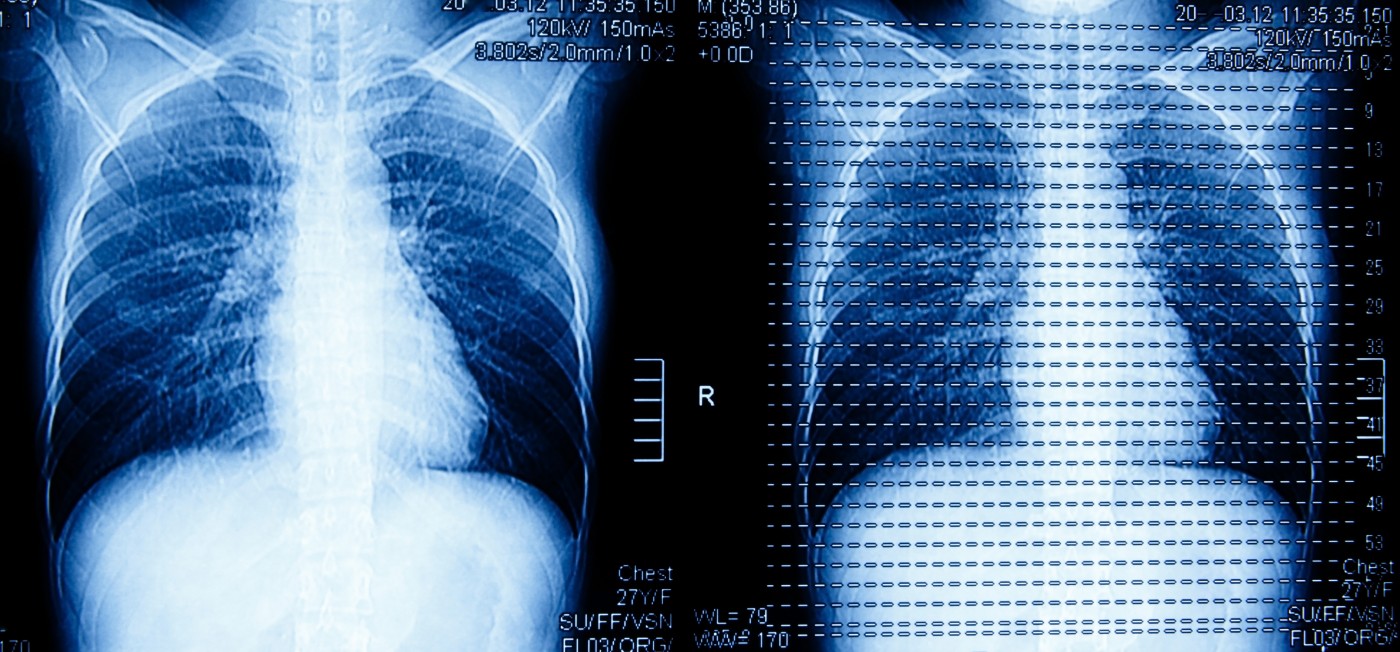A new study recently published in the journal BMC Medicine revealed that specific patterns in high-resolution computed tomography (HRCT), namely traction bronchiectasis can offer prognostic value for fibrotic lung diseases. The study was led by researchers at the Royal Brompton Hospital in the United Kingdom, and is entitled “Relationship between fibroblastic foci profusion and high-resolution CT morphology in fibrotic lung disease.”
Bronchiectasis is a respiratory condition characterized by a chronic inflammation that usually results from an infection or other condition that injures the walls of the airways, causing irreversible airway dilatation and scarring (fibrosis). In bronchiectasis, the airways slowly lose their ability to clear out mucus, so it accumulates in the lungs, creating an environment prone to bacteria growth that can lead to severe lung infections.
The discovery of accurate prognostic biomarkers for fibrotic lung diseases is important to guide management decisions concerning treatment in order to improve patients’ survival rates. Studies have reported the presence of fibroblastic foci (sites were fibrotic responses are initiated) as manifestations of active lung injury, and have suggested them as possible prognostic factors of physiologic decline and mortality. However, the majority of the patients with fibrotic lung disease are not submitted to surgical lung biopsy, limiting the use of fibroblastic foci assessment as a prognostic tool.
HRCT is routinely performed as part of the assessment of patients with lung diseases. HRCT patterns are like honeycombs (presence of small cystic spaces with irregular thickened walls of fibrous tissue) and traction bronchiectasis (a subtype of bronchiectasis where irreversible dilation of bronchi and bronchioles is observed in areas of fibrotic lung tissue or distorted lung architecture) have been reported to have prognostic value.
In the study, researchers investigated the possible link between HRCT patterns and fibroblastic foci profusion. The team analyzed 162 patients with confirmed fibrotic lung diseases like fibrotic non-specific interstitial pneumonia (NSIP), usual interstitial pneumonia (UIP)/idiopathic pulmonary fibrosis (IPF), and chronic hypersensitivity pneumonitis (CHP).
Researchers found that an increasing reticulation extent and severity of traction bronchiectasis were both independent factors associated with an increasing fibroblastic foci score considering the entire patient cohort. Within each individual disease subgroup, the fibroblastic foci score was found to be strongly associated with the severity of traction bronchiectasis in patients with UIP/IPF and CHP. In NSIP patients, there was no correlation between the severity of traction bronchiectasis and the fibroblastic foci score, although the first one was found to be strongly linked to the global disease extent.
The research team concluded that in fibrotic lung diseases like UIP/IPF and CHP, the histopathologic profusion of fibroblastic foci is associated with the severity of traction bronchiectasis as assessed by HRCT images, and suggest that traction bronchiectasis can be a valuable mortality predictor in several fibrotic lung diseases.

